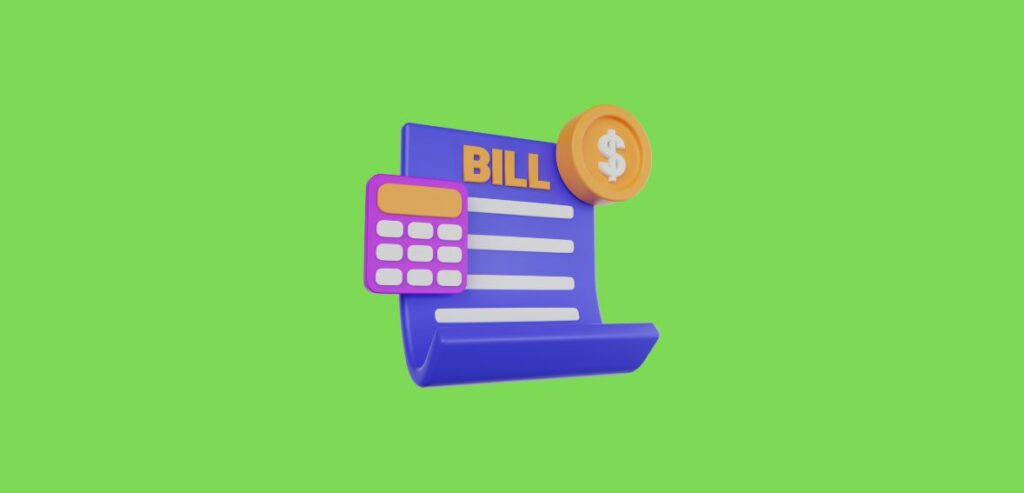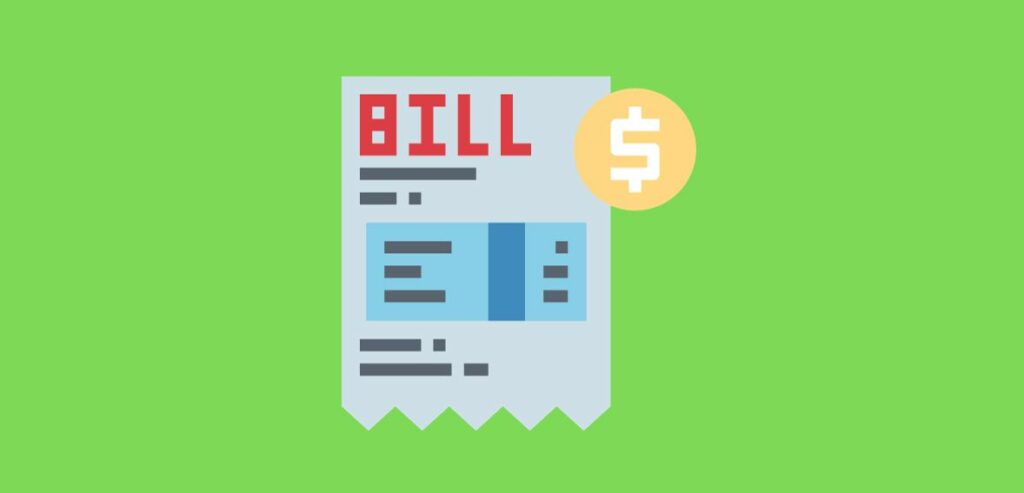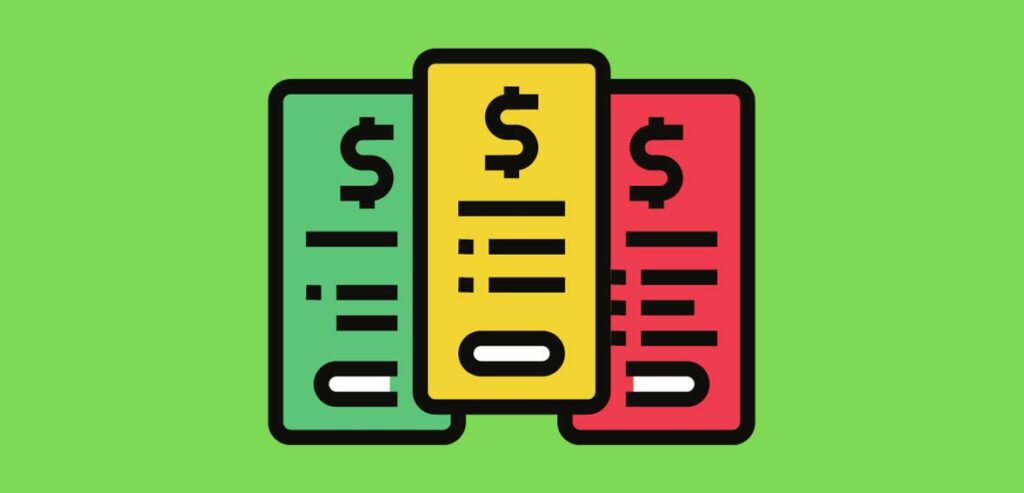Every business needs to keep an eye on its money to stay healthy. While some businesses get paid once for a product or service, others, like many software companies, earn money through subscriptions.
In a subscription setup, customers pay every month to use a service and get its full benefits throughout that month. But the problem with the subscription-based model lies is, occasionally, customers cancel their subscriptions in the middle of a billing period. What can businesses do? Can companies make customers pay for the total period that they had signed up for or charge them precisely for the services that have been used?
Here is when the prorated billing comes into play. With the help of prorated billing, you are ensured that your customers are being charged accurately and fairly.
What Is Prorated Billing?

Prorated billing refers to the practice of charging customers for the duration they have utilized a product or service. This billing approach is especially relevant for businesses that operate on a subscription-based or software-as-a-service (SaaS) model. In a subscription-based model, both orders and revenue streams occur on a recurring basis. When customers subscribe to a service they agree to pay a predetermined amount at intervals in exchange for using the products or services.
The actual billing amount depends on the plan the customer has subscribed to and the overall duration of their subscription. Typically customers remain subscribed to the plan and make recurring payments accordingly. However, complications can arise when customers decide to modify their plans or switch them prior, to their billing renewal date.
In such situations the billing amount is calculated based on the number of days spent under each specific plan – this is known as prorated billing.
How Prorated Billing Works
Prorated billing is a system that determines the amount you should pay for a service based on the time you use it. It allows you to be charged for the days or hours that you utilize the service rather than paying a fixed monthly or yearly fee regardless of usage.
This billing method is commonly used by businesses operating on a subscription model. These companies generate revenue through yearly or monthly subscriptions and provide customers with the flexibility to modify their subscription plans more frequently, than just once a year. The advantage of prorated billing for customers is evident; it ensures that you only pay for the duration you use the service rather than being committed to a full-year payment when you may only need the service for a few months or even just a few days. This approach to billing promotes fairness and flexibility empowering customers to have control, over their expenses and get value from their subscriptions.
How Prorated Billing Helps A Subscription Business? Some Examples And Benefits Explained

A subscription billing business, or SaaS subscription provider, might use prorated billing in the following scenarios:
- Upgrading a Plan:
Sometimes customers who have already subscribed to a plan may choose to switch to a plan that offers more advantages has a different price or includes additional features. When a company providing subscription services allows its customers to easily make this switch it needs a way to determine the payment for the customer during the transition.
This is where prorated billing becomes relevant. Essentially prorated billing helps calculate the proportion of the plan’s cost that the customer should pay based on how much time remains in their billing cycle. Let us say we have Linda as an example; she has been subscribed to the plan of a streaming service for $100 per month. However, through the month, she decides she wants to upgrade her subscription to the premium plan which costs $300 per month. Here’s how it works:
| Step | Description | Calculation | Result |
| Calculate Daily Cost | Determine the daily cost of each plan. | Basic Plan: $10 ÷ 30 days | $3.33/day |
| Premium Plan: $300 ÷ 30 days | $10/day | ||
| Determine Partial Usage | Identify the portion of the month Linda used each plan. | Days on Basic Plan: 15 days | 15 days |
| Days on Premium Plan: 15 days | 15 days | ||
| Calculate Prorated Cost | Multiply the daily rate by the number of days for each plan. | Prorated Basic Plan Cost: $3.33 × 15 days | $49.95 |
| Prorated Premium Plan Cost: $10 × 15 days | $150 | ||
| Total Cost | Add the prorated costs of both plans to get the total amount owed by Linda . | Total Cost: $49.95 (Basic) + $150 (Premium) | $199.95 |
Without prorated billing Linda would have had to pay the $300 for switching to the premium plan even though she only used the basic plan for half of that month. However, thanks to prorated billing mechanisms in place companies can calculate Linda’s payment based on how much time she will utilize and benefit from having access, to the premium plan during that particular month.
- Downgrading the Plan:
Rather than upgrading, your customer will switch to a lower plan. The calculation method remains the same. However, in this case, instead of asking the customer to pay an additional amount right away, you’ll need to adjust a credit that they already have against the cost of the new, lower-priced plan. This credit will then be applied to their next bill. To make this clearer, let’s walk through a detailed example.
A customer, let’s take Linda from the previous example, was previously on a higher-tier plan that costs $150 per month. Midway through the month, she decides to switch to a lower-tier plan that costs $100 per month, this is how it will look like:
| Step | Description | Calculation | Result |
| Calculate Daily Cost for Higher Tier Plan | Determine the daily cost of the higher-tier plan. | Daily Cost: $150 ÷ 30 days | $5/day |
| Determine Unused Days in Higher Tier Plan | Identify the number of days John didn’t use the higher-tier plan. | Unused Days: 15 days (half of the month) | 15 days |
| Calculate Credit Amount for Unused Days | Multiply the daily cost by the number of unused days. | Credit Amount: $5/day × 15 days | $75 |
| Calculate Daily Cost for Lower Tier Plan | Determine the daily cost of the lower-tier plan. | Daily Cost: $100 ÷ 30 days | $3.33/day |
| Calculate Deduction from Credit | Multiply the daily cost of the lower-tier plan by the number of remaining days. | Deduction: $3.33/day × 15 days | $49.95 |
| Adjust Remaining Credit | Subtract the deduction from the total credit amount. | Remaining Credit: $75 – $49.95 | $25.05 |
| Carry Over Excess Amount | The remaining credit of $25.05 will be adjusted in the next month’s billing. | Adjusted Credit for Next Month | $25.05 |
Linda will be credited $75 for the portion of her higher-tier plan that she did not use. After deducting the prorated cost of the lower tier plan for the remaining days, any excess credit of $25.05 will be carried over and applied to adjust their billing in the month.
This ensures that the customer receives an adjustment for the days they did not use without losing out on the credit amount.
Which Industries Uses Prorated Billing?
Many businesses can gain from using prorated billing, especially when customers change or start subscriptions partway through a billing period. Here’s a closer look at the kinds of businesses that find prorated billing useful:
- Online Subscriptions and Services:
Companies like streaming platforms, software services (known as SaaS), fitness clubs with memberships, and other subscription services can all use prorated billing. This method lets customers adjust or start their subscriptions at any time during the billing cycle, making it easier for them and increasing satisfaction.
- Services Based on Time or Usage:
Professionals like consultants and freelancers, as well as utility companies and car rentals, can also benefit from prorated billing. By charging customers only for the time or amount they actually use, these businesses can keep billing clear and build trust with their customers.
- Event Spaces and Rentals:
Places like co-working offices, hotels, and event halls often use prorated billing. This lets them adjust charges based on the time or space you use. It’s handy when bookings change and helps them manage money better.
- Internet and Tech Services:
Companies that offer things like internet access or online storage can use prorated billing too. This lets customers change plans or services without extra fees, making them more likely to stick around and trust the company.
- Groups and Clubs:
Groups like clubs or professional organizations can also use prorated billing. It lets members join or renew anytime during the billing period. This makes things easier for everyone and helps them collect fees more accurately.
How To Ensure Prorated Billing Is Being Used Effectively

Proration is only sometimes straightforward. In some scenarios, with upgrades, feature removals, and early terminations, the calculations can be complex, especially when there are multiple operations per customer. Here are some tips for prorated subscription billing:
- Use a Modern Payment Processing Service: With different types of payments and invoices, it can be challenging to collect recurring payments. With a contemporary and reliable payment processing service provider, it becomes easier to collect payments from across the globe.
- Track the Effects of Proration on Revenues: Revenue recognition is a complicated compliance issue for most SaaS businesses. As payments are prorated, knowing the dates when a new subscription is created is essential. Otherwise, it is expected to make errors when incorrectly recording payments from subscriptions to recognize the revenue when appropriately earned.
- Be Transparent with Customers: Ensure you remain transparent about the proration of charges. Policies, prorated amounts, and the proration method should be clearly explained on invoices. This ensures customers receive a positive experience with every interaction.
Importance Of Proration
As most SaaS products enable customers to make changes to their subscription plans within a billing cycle, it is crucial to have the capability to align fees with actual usage. In this manner, the customers are assured that they have only paid for the services they use. It is an excellent way to boost customer engagement and loyalty and encourage referrals.
Prorated billing is an excellent way to handle subscription changes. However, doing the calculation manually is time-consuming. Switching to a professional subscription management software solution for calculating prorated billing can help save time significantly. It can also help in preventing expensive errors.
Customer success plays a crucial role in the failure or success of any SaaS business. Therefore, knowing how to prorate can have a significant impact on the success of the company.
Benefits Of Prorated In The Subscription Business

Proration is crucial in streamlining accounts’ billing, invoicing, and payment processing without the hassles of refunds, chargebacks, or adjustments.
- Hassle-free Returns & Refunds: Inaccuracy can damage a company’s overall reputation. Additionally, it complicates the entire accounting process for the billing cycle. If the customer’s credit card has been charged inaccurately, businesses are expected to refund the difference for the downgraded plan or partially unused billing period. The same applies to upgrades or new service purchases part way through a billing cycle. In both cases, not having a transparent system and policy for prorated billing creates extra work for the business and can potentially harm customer relationships. It can also lead to unnecessary processing fees and even chargebacks.
- Accurate Billing: With the help of proration, customers have confidence they are only being charged for services they are using. This helps improve trust and build long-term loyalty. Businesses can maintain accuracy and transparency in their billing policies using prorated billing. Businesses are still being compensated for services, upgrades, and downgrades while only charging prorated amounts to customers. This can be especially helpful for SaaS subscription payment processing and other online service businesses that accept electronic payments.
- Usage-centric Fair Charges: Through recurring and subscription-based billing systems, it is possible to simplify the adjustment and billing process with fair dealings and transparency. It is achieved with the help of prorated billing, which helps determine the accurate charges. Whether it is about upgrading or downgrading the plan, businesses can charge customers for only what they have utilized in the given billing cycle.
- Building Trust: Giving customers the flexibility to modify their subscriptions as needed serves two purposes. It addresses their changing needs and helps establish a strong foundation of trust. It also empowers them to make seamless adjustments promoting a sense of reliability and dependability throughout the relationship between businesses and consumers.
- Simplifying Administrative Tasks: By implementing a subscription system that automatically calculates and applies prorated charges or credits during any changes to the subscription manual administrative tasks are significantly streamlined. This efficiency not only saves time but also enhances the customer experience by minimizing errors and ensuring a smoother more automated process. Ultimately reducing the need for interventions leads to an improvement in customer satisfaction.
Drawbacks Of Prorated Subscription Billing
Using prorated billing can be tricky for businesses. Here are some key issues they might face:
- Calculating Costs: Businesses need a reliable system to figure out prorated charges, especially if they have different subscription plans and prices. It’s like solving a puzzle with many pieces, and mistakes can happen if the system isn’t up to the task.
- Development and Testing: Switching to prorated billing can require a lot of work to change or create billing systems. Plus, testing is crucial to make sure everything works right. This can be tough for smaller businesses that might not have a lot of extra time or money.
- Confusing Model for Some: Some customers might find prorated billing confusing and may not understand their charges. To help them out, businesses should explain things clearly, keep communication open, and offer easy-to-reach customer support.
- Making Operational Changes: Using prorated billing might mean businesses need to tweak how they operate. This could include changing billing schedules, updating how invoices are sent, or adjusting how they manage customer information. Making these changes smoothly, while still meeting quality and legal standards, can be a bit challenging for businesses.
Tips For A Successful Prorated Billing Cycle
Integrating a billing system into your small business can bring about fairness and transparency benefiting both you as the service provider and your customers. Here are some suggestions, on how to incorporate prorated billing into your operations;
- Evaluate Your Services: Start by examining the services or products your business offers. Determine which ones are most appropriate for billing taking into account factors like usage variability or service access frequency.
- Establish Transparent Pricing: It is crucial to establish a base rate for your service. Additionally, create a method for calculating charges that reflect usage. This transparent pricing approach ensures that both you and your customers have an understanding of how charges are determined, building trust and satisfaction.
- Define the Billing Cycle: In the business world it’s essential to think about what billing cycle suits your industry or service best. While monthly billing is popular it’s important to consider options, like different intervals that align with customer preferences and operational requirements.
- Select a Reliable Payment Processor: Choosing the right credit card processing provider is paramount when implementing a prorated billing system. Look for a reputable provider that offers specialized solutions tailored to prorated billing requirements. Ensure they have a track record of reliability, security, and excellent customer support to facilitate smooth and efficient transactions.
Conclusion: Prorated Billing Key Takeaways
Prorated billing emerges as a pivotal solution for businesses and customers alike, offering a balanced approach to subscription management. This billing method stands out for its fairness, ensuring that customers are only charged for the services they actually use. For businesses, prorated billing streamlines operations by automating calculations and minimizing administrative complexities.
While its advantages include trust-building, accurate billing, and simplified processes, there are also challenges to consider, such as system development and potential customer confusion. Nonetheless, with careful implementation and transparent communication, prorated billing can significantly enhance the customer experience, build loyalty, and contribute to the overall success of subscription-based businesses.
Frequently Asked Questions About Prorated Billing
What exactly does “prorated” mean?
To prorate means to allocate or divide something proportionally based on a specific time frame.
How would you describe “prorated” to a customer?
Proration might sound intricate, but it's quite straightforward. Imagine you rent a service or product for a shorter duration than initially planned. In that case, it's reasonable to pay only for the time you utilized. That's the essence of proration—adjusting costs based on actual usage.
How do you compute prorated billing?
Calculating prorated charges involves a simple two-step process:
First, determine the daily rate by dividing the monthly fee by 30.
Next, multiply this daily rate by the number of days the service was used to arrive at the prorated amount.What formula is used for prorating?
The prorated formula is straightforward: Divide the specific quantity of an item by its total available quantity. This resulting ratio can then be applied universally to other related items to maintain the same proportion.

